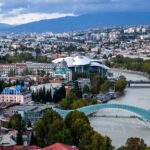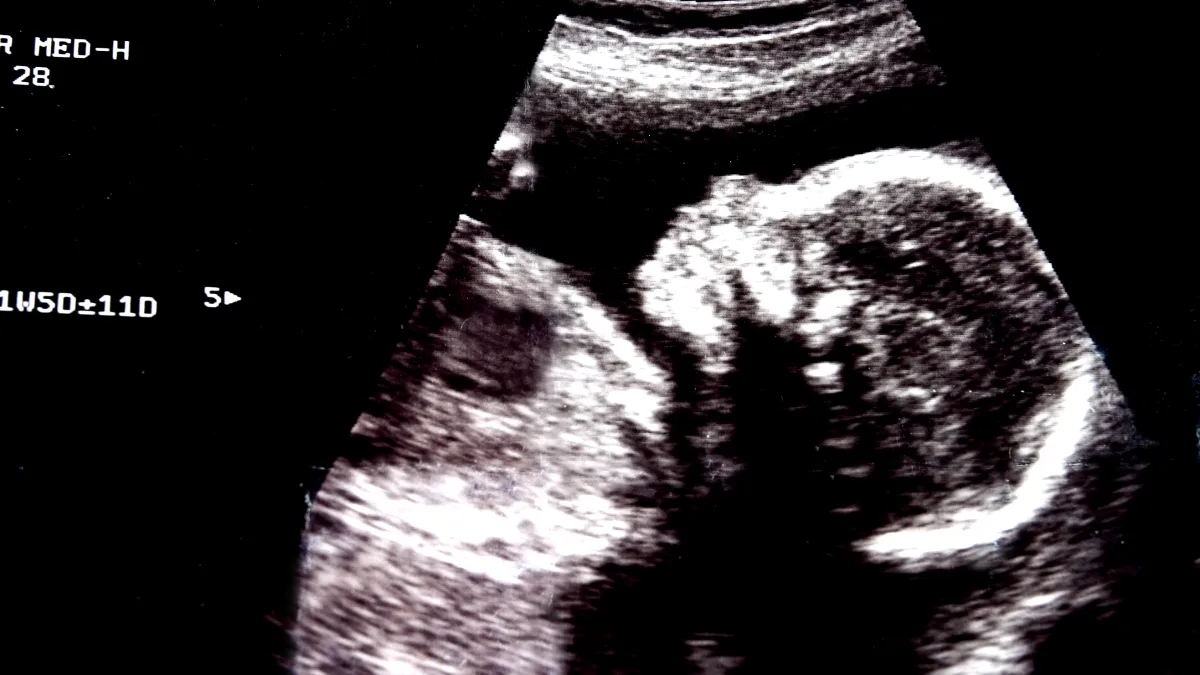Ashgabat, the capital of Turkmenistan, is a city of pristine white marble, whose vast boulevards and glittering facades seem designed to dazzle anyone stepping off a plane.
Towering apartment blocks wrapped in glossy alabaster reflect the desert sun, while monuments to past leaders loom at seemingly every intersection.
Yet despite the grandeur, the streets often appear unnervingly empty. Pedestrians are few, and outside of occasional official parades or state-sponsored events, the city feels subdued—more stage set than thriving metropolis.
During the punishing summer months, desert winds sweep through, stirring up little more than a faint echo of activity. This surreal stillness hints at a deeper truth: Turkmenistan, for all its riches and potential, remains a country largely sealed off from the world.
Investors a rarity
The emptiness of Ashgabat’s expansive public spaces underscores the paradox that defines Turkmenistan. It is a nation endowed with some of the world’s largest natural gas reserves, second only to Russia among the once Soviet republics in reported capacity.
However, it has the tightest regimes in Central Asia, with foreign tourists a rarity and international investors scarcer still. Official state media projects an image of perpetual prosperity, buoyed by substantial gas exports and a promised diversification of the economy.
But outside observers remain sceptical. Much like the spotless sidewalks of the capital, the country’s official GDP data present a gleaming surface that is difficult to reconcile with on-the-ground realities.
Reliable statistics are nearly impossible to obtain, and few have confidence in the government’s claims of robust growth, which often appear in the high single digits or even above 10 per cent. Independently verifying Turkmenistan’s economic trajectory is complicated by restricted access and the near-total absence of transparent reporting mechanisms.
Signs of ambition
Despite such barriers, Ashgabat stands as a living monument to the state’s ambition. The city was transformed under the rule of Saparmurat Niyazov, who styled himself ‘Turkmenbashi’ (Leader of the Turkmen), and later under Gurbanguly Berdymuhamedov, then Serdar Berdymuhamedov.
The marble-clad buildings and grandiose public projects grew seemingly overnight, financed by gas revenues that flowed into state coffers.
Today, the capital’s monolithic structures and empty plazas reflect not only opulent spending but also the limits of an economic model that has not led to sustainable development.
For the most part, Turkmenistan’s revenues still come from natural gas. Although this arrangement provides a steady stream of income, it also reinforces the state’s top-down approach to governance.
The power to grant or withhold lucrative contracts lies in the highest echelons of government, fostering a culture of patronage and discouraging competition.
An absence of data
Officially, the government touts its achievements in agriculture, textile production, and tourism, boasting of an ever-diversifying economy. State media outlets celebrate purported successes in creating new manufacturing plants and broadening the industrial base.
Not even sport is immune. Guinness World Records has denied Ashgabat-based football team Arkadag recognition for what would be a world record streak of 61 consecutive victories, citing doubts about the Turkmen league’s governance which make it impossible to verify the team’s claim.
Indeed, a lack of independently verifiable data casts doubt on all Turkmenistan’s claimed progress. In recent years, sporadic shortages of basic goods—flour, sugar, and cooking oil—have reportedly cropped up in various parts of the country. Last summer there were even shortages of drinking water.
Inflation, particularly for imported products, is believed to be significantly higher than official statements acknowledge. The International Monetary Fund (IMF) and the World Bank try to estimate Turkmenistan’s economic performance but face an opaque system that releases limited and carefully curated figures.
Consequently, Turkmenistan’s growth and GDP numbers are as elusive as the pedestrians on Ashgabat’s polished promenades. For what it’s worth, the European Bank for Reconstruction and Development (EBRD) estimated a 6.3 per cent year-on-year increase in real GDP in January-July 2024, driven by government-led investment in the modernisation and development of social and industrial infrastructure.
Turkmenistan’s potential
Even so, behind the white marble facades and the secrecy lurk compelling reasons why Turkmenistan might one day become a magnet for foreign investment—if its leadership were ever to adopt a more open stance.
The most obvious draw is the country’s massive reserves of natural gas, especially in the Galkynysh field, the second largest in the world. Developing these fields and upgrading existing infrastructure could require advanced technology and substantial capital, something Western, Chinese, or Middle Eastern companies might be eager to provide under more transparent conditions.
Improving pipeline networks, adding liquefied natural gas (LNG) facilities, and building gas processing plants could unlock further export opportunities beyond current arrangements with Russia and China.
The country’s geography also confers an enviable strategic position. Located on the eastern shore of the Caspian Sea, Turkmenistan is bordered by Afghanistan, Iran, Uzbekistan, and Kazakhstan, making it a potential nexus for transit and trade between Asia and Europe.
Plans and proposals for trans-Caspian pipelines to reach Azerbaijan (and further into Europe) have swirled for years, often revived whenever geopolitics in the region shift. Turkmenistan’s leadership has at times expressed interest in deeper collaboration with China’s Belt and Road Initiative, but bureaucratic hurdles and a lack of transparency have slowed progress.
If the political regime ever moved to simplify customs procedures, open the transport sector to private players, and standardize regulations, Turkmenistan could emerge as a vital overland route for freight and passenger travel, linking Istanbul or Moscow to Beijing or Delhi.
Agriculture and tourism
Agriculture could be another area ripe for foreign investment. Though much of the country is desert, the government has long invested in extensive irrigation networks to cultivate cotton and wheat.
However, water scarcity, outdated farming techniques, and rigid central planning have limited the sector’s development. Foreign know-how in modern irrigation, crop diversification, and sustainable agriculture could reshape Turkmenistan’s farming regions.
Investors willing to introduce climate-resilient seeds, advanced machinery, and better water management systems might find ample opportunity—provided they navigate the country’s complex political framework.
Perhaps the most surprising frontier is tourism. In an attempt to create a showcase for foreign visitors, Turkmenistan established Awaza, a purpose-built resort zone on the Caspian coast.
Gleaming hotels and immaculate boardwalks were constructed to lure tourists to a supposedly world-class beach destination. Yet, as with many projects in Turkmenistan, Awaza feels staged and underused. One former ambassador from a western European country reports being the only guest at his hotel.
The country’s strict visa requirements, minimal international marketing, and overall insularity have kept visitor numbers negligible. Nonetheless, Turkmenistan’s cultural heritage—including ancient Silk Road sites like Merv, Konye-Urgench, and Nisa—could appeal to historically minded travellers if basic infrastructures, such as reliable transport and user-friendly regulations, were improved.
For now, however, the numerous checkpoints and opaque administrative procedures deter even the most intrepid explorers.

Time to loosen control
Realising Turkmenistan’s full potential requires dismantling or at least loosening many of the existing political and economic controls. Central among these issues is the authoritarian style of governance. Business deals often hinge on relationships with top officials, and the shifting alliances within the ruling elite can undermine long-term investment strategies.
Companies with large capital outlays are wary of an environment where agreements can vanish overnight, foreign exchange is tightly regulated, and repatriating profits is far from guaranteed.
Turkmenistan’s banking sector is controlled predominantly by state-owned entities, and corruption allegations are widespread. Independent reporting suggests that revenues from gas exports do not always flow transparently into public accounts; instead, they may be funnelled into private coffers controlled by well-connected individuals.
The importance of reliable data and open information channels cannot be overstated. Without independent auditing or transparent budget allocations, even large firms—experienced in operating in challenging environments—hesitate to commit.
Internet access is limited, censorship is high, and social media are heavily monitored or blocked. This information chokehold hampers the kind of market research and feasibility assessments that normally guide foreign investment.
While the government occasionally promises reforms, few have materialised in ways that inspire confidence. The transition from Gurbanguly Berdymuhamedov to his son Serdar in 2022 looked, at first glance, like a possible turning point. But many analysts contend that the younger Berdymuhamedov has merely continued the same policies, rather than enacting significant political or economic opening.
The wider context
Meanwhile, external factors might pressure Turkmenistan to be more forthcoming. Europe’s quest to reduce dependence on Russian energy has reignited interest in the trans-Caspian pipeline, which could transform Turkmenistan into a major supplier to the West.
China’s insatiable demand for hydrocarbons might spur Beijing to push Ashgabat for better terms and clearer data on reserves and production. The long-discussed TAPI pipeline—Turkmenistan-Afghanistan-Pakistan-India—could, if completed, open up significant markets in South Asia.
Yet persistent security concerns in Afghanistan and political wrangling among the stakeholders have put the project on hold for years. If it were ever to move forward, Turkmenistan would find itself more economically integrated and obliged to adopt international norms on contracts, safety, and transparency.
In the end, one need only stroll through the nearly empty boulevards of Ashgabat to grasp Turkmenistan’s predicament. Gleaming marble, monumental arches, and statues dedicated to the ruling family speak to the state’s aspirations and wealth.
But the wide streets, devoid of commerce and crowds, quietly ask whether all that money and potential might be more productively channeled into opening the country, modernizing infrastructure, and nurturing a private sector. For now, those questions hang in the hot desert air, awaiting a shift in policy or leadership that could unlock one of Central Asia’s most intriguing and least understood countries.
Should that shift occur, investors of all stripes—energy giants, agribusiness conglomerates, tourism operators, and transportation firms—would look to Turkmenistan with fresh eyes.
Many might rush in, lured by the promise of untapped resources and a strategic crossroads in an increasingly interconnected region. The transformation would require a commitment to accountability, global standards, and the establishment of institutions strong enough to protect property rights and enforce contracts. It would also demand reliable data, so that growth and GDP statistics align more closely with tangible realities.
Until that day, Ashgabat will remain a surreal city of white marble, staring out at empty streets, glittering under the desert sun, and waiting for a world it has yet to truly invite in.
Top photo by Ross Findon on Unsplash.







